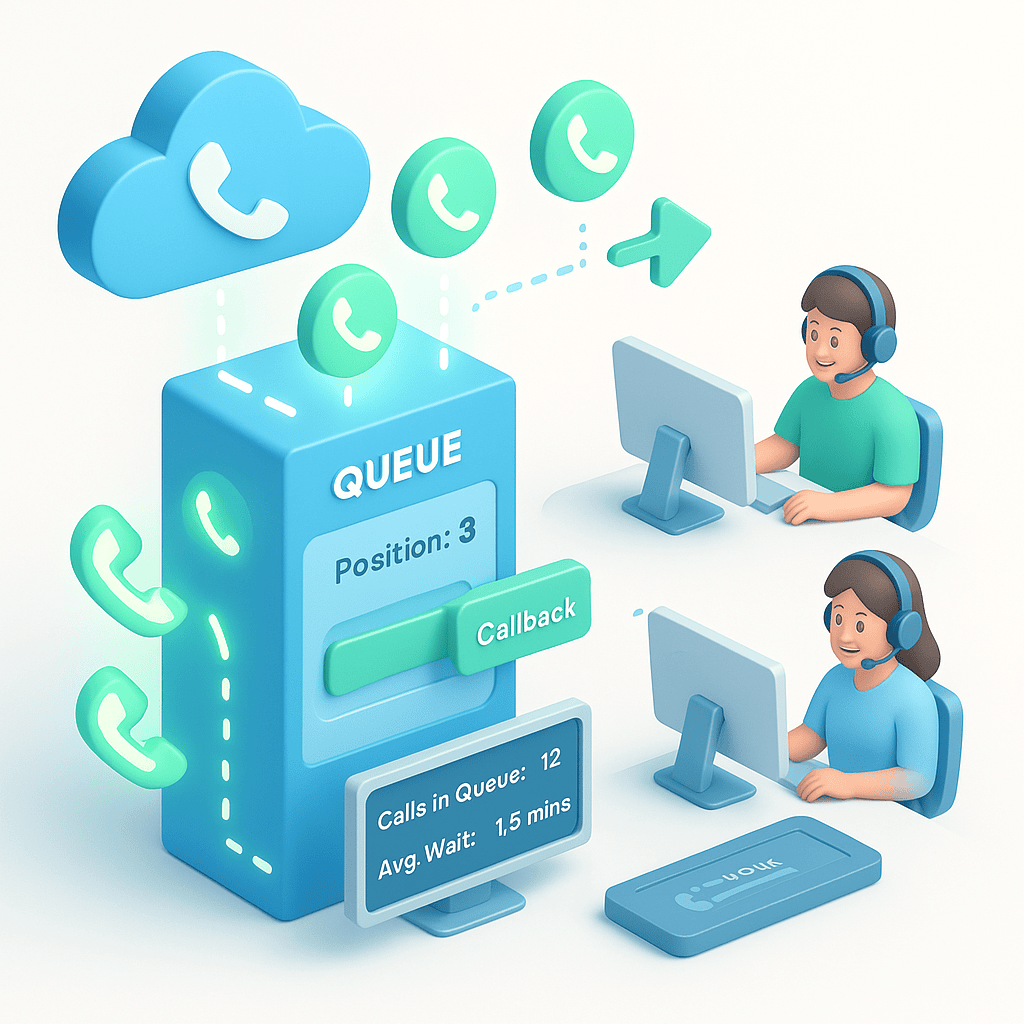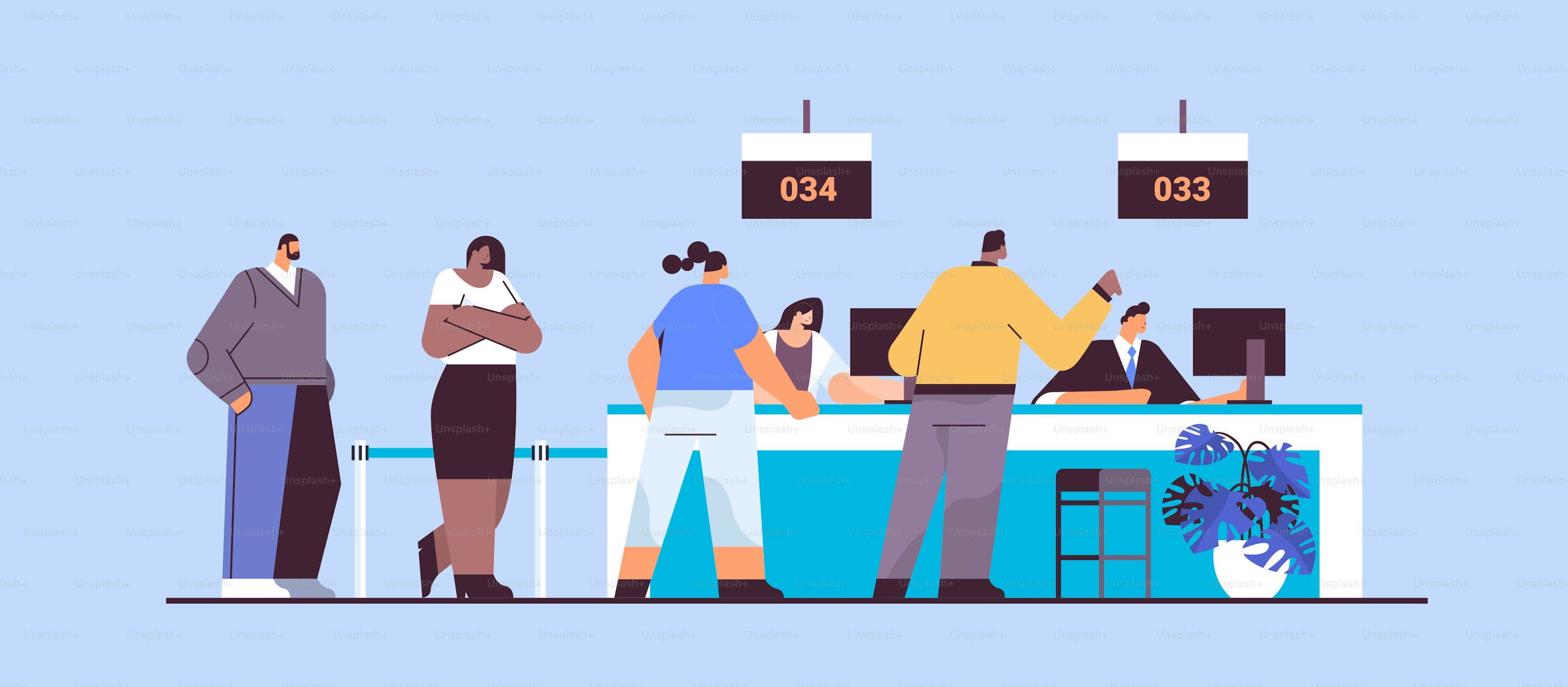
Why Do 62% of Calls Go Unanswered? (And How to Fix It)
Imagine losing 22% of potential customers because your phone lines are overwhelmed. With 88% of callers demanding instant answers, a call queuing system isn’t optional—it’s survival.
In this guide, you’ll learn:
What call queuing is (and how it cuts missed calls by 50%)
The exact setup steps for your business (5 minutes or less)
3 mistakes that make callers abandon your queue
What is Call Queue? (No Jargon, Just Results)
A call queue is a virtual waiting room for incoming calls. When agents are busy, callers hear hold music (or promotions) instead of a busy tone. Example:
Without a queue: Caller hears “All agents are busy. Goodbye.”
With a queue: Caller hears “You’re #3 in line. Wait time: 2 minutes. Want a callback?”
Key stat: Businesses using call queues report 35% fewer missed calls and 20% higher customer satisfaction.
What is Call Queuing and Why It’s Essential for Your Business?

7 Ways to Optimize Your Call Queue for Maximum Conversions
1. Add Position Updates (e.g., “You’re #2 in Line”)
Why it works: 67% of callers stay on hold if they know their place in line.
Keyword integration: Use phrases like “calls in queue” in your IVR scripts.
2. Offer a “Callback” Button (Before They Hang Up)
Result: Reduces abandonment rates by 40%.
Script example: “Press 1 to keep your place in the call queue, or press 2 for a callback without losing your spot.”
3. Route Calls by Skill (Not Just Availability)
Example: Send tech issues to Agent A (certified expert) and billing questions to Agent B.
Keyword tie-in: Mention “call queuing system” when explaining smart routing.
4. Add Urgency to Hold Messages
Bad: “Thanks for waiting.”
Good: “Your call is important! We’re connecting you to the next specialist in 1 minute.”
5. Share Wait Times on Your Website
Embed a widget showing live call queue wait times (e.g., “Current wait: 3 minutes”).
6. Train Agents to Apologize for Delays
Script: “Thanks for waiting in our call queue—I’ll resolve this quickly for you.”
7. Analyze Abandoned Calls Weekly
Fix recurring pain points (e.g., 5-minute+ waits trigger callbacks).
3 Costly Call Queuing Mistakes (And How to Avoid Them)
❌ Mistake 1: Letting calls loop endlessly.
✅ Fix: Set a max wait time (e.g., 5 minutes) + auto-callback.
❌ Mistake 2: Silent hold (no music/updates).
✅ Fix: Add branded hold messages mentioning “call queuing system benefits.”
❌ Mistake 3: No priority for VIPs.
✅ Fix: Tag high-value clients for instant agent routing.
“How Do I Set Up a Call Queue?” (5-Minute Checklist)
1. Pick a Provider: Use AANCALL’s call queuing tool (no coding).
2. Upload Hold Content: Record messages like “Thanks for waiting in our queue!”
3. Set Rules: Priority for VIPs, max wait time = 3 minutes.
4. Add Callback Options: Let callers request a callback via SMS.
5. Test with Your Team: Simulate 50+ calls in queue to refine workflows.
FAQ: Answering Top “Call Queue” Questions
Q: What’s the difference between a call queue and a phone tree?
A: A phone tree routes calls to departments, while a call queue holds calls until agents are free.
Q: Can I use call queues for remote teams?
A: Yes! Distribute calls in queue across agents worldwide (ideal for 24/7 support).
Q: How much does a call queuing system cost?
A: Plans start at $25/month—cheaper than losing 22% of callers.
Ready to Stop Losing Calls? Try Aancall
Why AANCALL’s call queuing system works:
✅ 99% answer rate
✅ Pre-built hold messages
✅ Monthly contracts
Call queuing isn’t just a tool—it’s a strategic advantage. With AANCALL, you’ll turn every customer interaction into an opportunity to build loyalty and drive growth.





